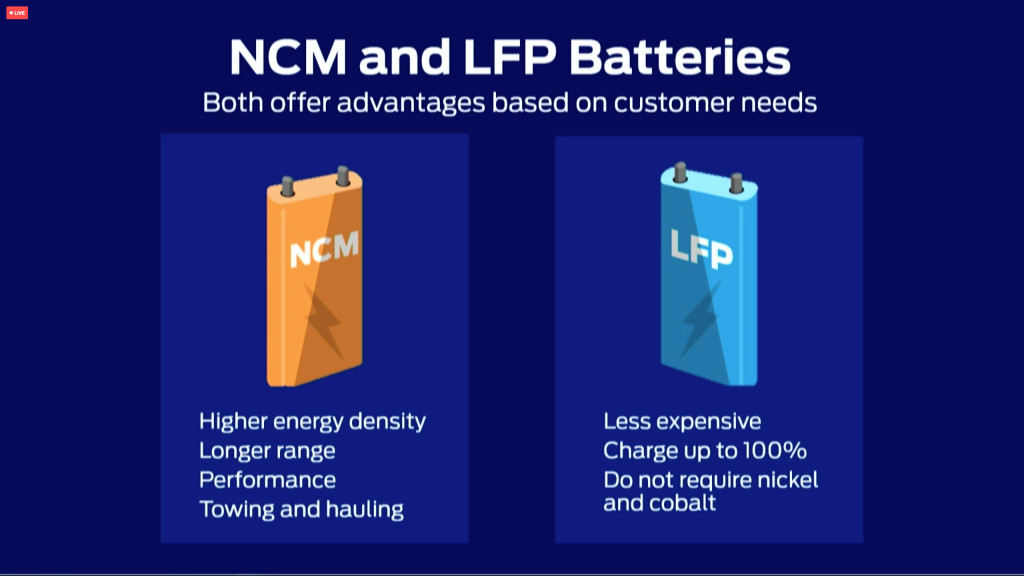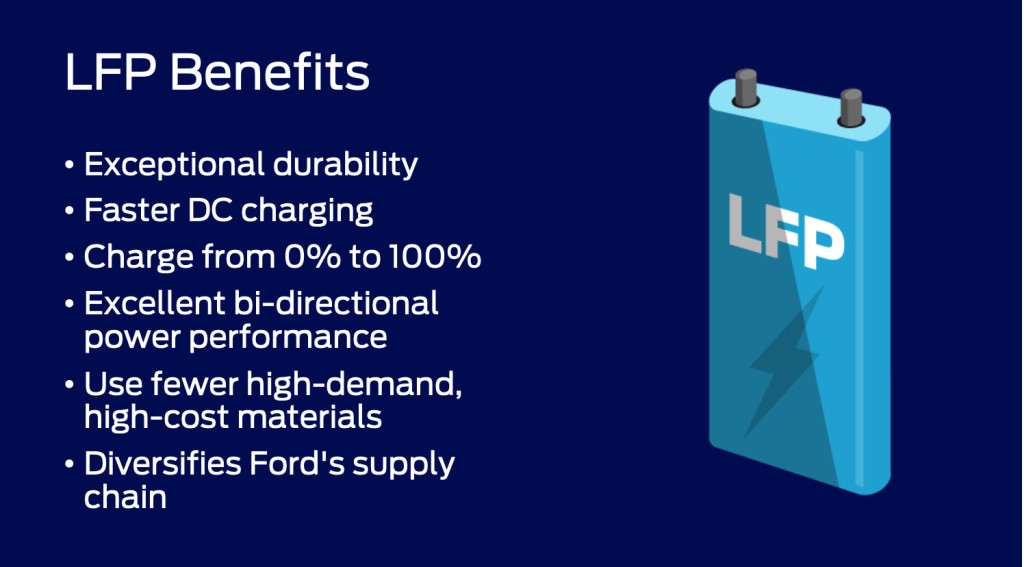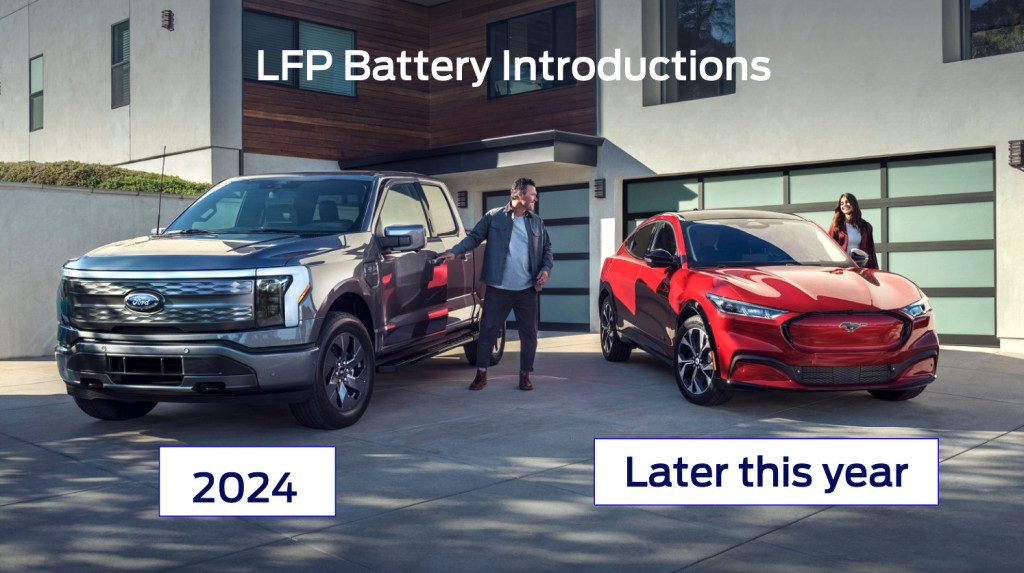Ford has confirmed that it’s halting construction of a $3.5 million battery plant in Michigan that the automaker had focused on just months earlier as a key for EV affordability.
The plant, near Marshall, Michigan, was due to create about 2,500 jobs and make lithium-iron-phosphate (LFP) batteries, which tend to be much cheaper to produce than the nickel-cobalt-manganese (NCM) batteries that Ford currently uses in its EVs. When the plant was announced, in February, Ford said that the plant would make “one of the lowest-cost U.S.-produced batteries.”
That said, the cost of producing those cells appears to be at the core of Ford’s decision to hold off.
Ford Mustang Mach-E at Tesla Supercharger
“We’re pausing work and limiting spending on construction on the Marshall project while we reassess the business decision, to be confident about our ability to competitively operate the plant,” stated Ford corporate spokesperson T.R. Reid, in a response to Green Car Reports late Monday, after news of the halt spread via social media and a report from The Detroit News.
“There are a number of considerations,” summed Reid, in the rest of the statement to GCR. “We haven’t made any final decision about the planned investment.”
Ford would not say to the Detroit News whether the decision had any connection to the current UAW strike, but on Tuesday, President Biden is due to help rally striking workers in Michigan.
Other factors that may have had a role in the decision in addition to costs or labor include a reliance on China for licensing of the technology. The plant was, however, due to be owned and run entirely by Ford.

Ford comparing NCM and LFP battery types

Ford LFP battery benefits
As Ford said at the time of the announcement, LFP batteries boast many advantages. They help strengthen the supply chain as they put a lighter burden on some high-demand, high-cost materials, while they can be charged from 0-100% daily, and they’re also the preferred choice for bidirectional charging. On the other hand, they can be sluggish to charge in very cold weather, and they’re slightly heavier than NCM tech.
Tesla has been putting LFP cells in the Model 3 Standard Range since late 2021, and they’ve been quite well-received by owners.

Ford LFP product introductions
The decision, Ford summed, was informed by both vehicle use data and bottom-line cost, and that LFP batteries were bound for the Mustang Mach-E and F-150 Lightning.
LFP Mach-E deliveries are expected to start later this year. While base versions of the Tesla Model 3 with LFP cells manage eligibility for the full $7,500 amount of the EV tax credit, versions Ford Mustang Mach-E with a LFP battery pack will qualify for the same $3,750 EV tax credit amount as other current Mach-E Extended Range models.
